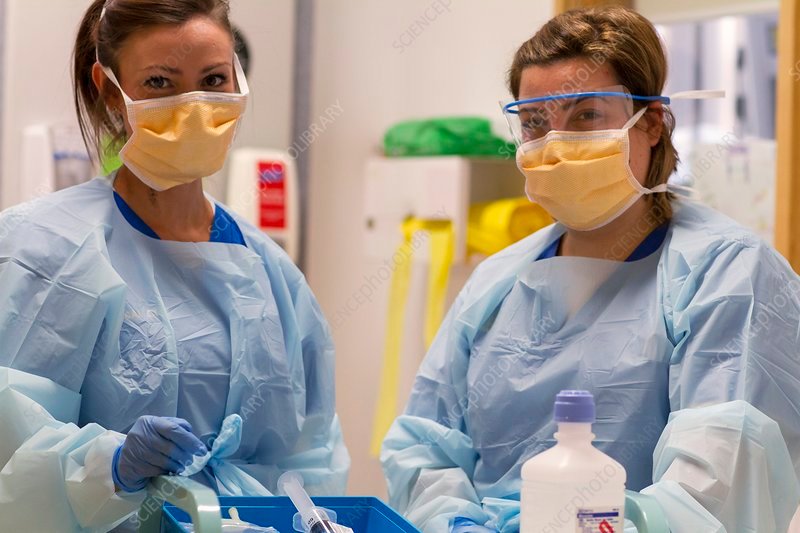Infection control in intensive care units (ICUs) is vital for ensuring patient safety and improving health outcomes. ICUs care for the most vulnerable patients who often have weakened immune systems. Because of this, infection control practices must be strict and followed diligently. In this article, we’ll discuss essential strategies and best practices to enhance infection control in intensive care units.
Understand the Importance of Infection Control
Infection control in intensive care units is crucial for preventing healthcare-associated infections (HAIs). These infections can lead to longer hospital stays, increased healthcare costs, and even higher mortality rates. By implementing effective infection control measures, healthcare providers can significantly reduce the risk of infections in critically ill patients. This understanding lays the foundation for developing effective infection prevention protocols.

Hand Hygiene is Essential
One of the simplest yet most effective ways to control infections in the ICU is through proper hand hygiene. Healthcare workers must wash their hands frequently and thoroughly before and after patient contact. Using alcohol-based hand sanitizers can also help reduce the spread of germs. Educating all staff members about the importance of hand hygiene is essential. Regular audits can help ensure compliance and reinforce the importance of this practice.
Use Personal Protective Equipment (PPE)
Personal protective equipment (PPE) plays a crucial role in infection control in intensive care units. Healthcare workers should wear appropriate PPE, such as gloves, gowns, masks, and face shields, when caring for patients. This equipment acts as a barrier to prevent the spread of infections between patients and healthcare providers. Proper training on how to use and dispose of PPE is necessary to maximize its effectiveness.
Implement Strict Sterilization Protocols
Sterilization of medical equipment and surfaces is vital in infection control in intensive care units. All equipment used in the ICU must be cleaned and sterilized according to established protocols. This includes devices such as ventilators, catheters, and IV lines. High-touch surfaces should be disinfected regularly to reduce the risk of surface contamination. Regular training and reminders for staff on sterilization protocols help maintain a clean and safe environment for patients.
Monitor Patients for Infections
Vigilantly monitoring patients for signs of infection is another key practice in infection control in intensive care. Healthcare providers should be trained to recognize early symptoms of infections, such as fever, increased heart rate, or changes in vital signs. Implementing routine assessments can help detect infections early and facilitate prompt treatment. Early intervention is crucial in preventing infections from becoming severe.
Limit Invasive Procedures
Invasive procedures, such as catheterizations and intubations, can increase the risk of infections in the ICU. Whenever possible, healthcare providers should limit the use of invasive devices. When such procedures are necessary, strict aseptic techniques should be followed. The use of appropriate devices, such as antimicrobial catheters, can also help reduce the risk of infection. This approach minimizes exposure and protects patients from unnecessary infections.
Educate Staff on Infection Control Practices
Continuous education for healthcare workers is essential for maintaining high standards of infection control in intensive care units. Regular training sessions can keep staff updated on best practices, emerging pathogens, and new infection control guidelines. Encouraging an open culture where staff feel comfortable discussing concerns about infection control can also enhance compliance. This ongoing education fosters a proactive approach to infection prevention.
Encourage Family Involvement
Family members play a critical role in infection control in intensive care units. Educating families about infection prevention practices can empower them to participate actively in their loved one’s care. For example, teaching family members about hand hygiene and visitation guidelines can help reduce the risk of infections. Encouraging them to ask questions and voice concerns can also promote a safer environment for patients.
Implement Antibiotic Stewardship Programs
Antibiotic stewardship programs aim to optimize the use of antibiotics to combat resistance and ensure their effectiveness. These programs involve regularly reviewing patients’ antibiotic prescriptions and making necessary adjustments. By preventing overuse and misuse of antibiotics, healthcare providers can reduce the risk of antibiotic-resistant infections. This practice is crucial in maintaining infection control in intensive care units.
Regularly Review Infection Control Policies
Lastly, regularly reviewing and updating infection control policies is vital for ensuring they remain effective. As new research and guidelines emerge, it is essential to adapt practices accordingly. Conducting routine assessments of infection control measures in the ICU can help identify areas for improvement. Engaging all staff members in these evaluations fosters a culture of accountability and safety.
Conclusion
Infection control in intensive care units is vital for protecting vulnerable patients and preventing healthcare-associated infections. By following best practices such as hand hygiene, proper use of PPE, strict sterilization protocols, and ongoing education, healthcare providers can significantly reduce the risk of infections. Each member of the healthcare team plays a role in creating a safe environment for patients. Implementing these strategies not only enhances patient safety but also improves overall healthcare outcomes.











